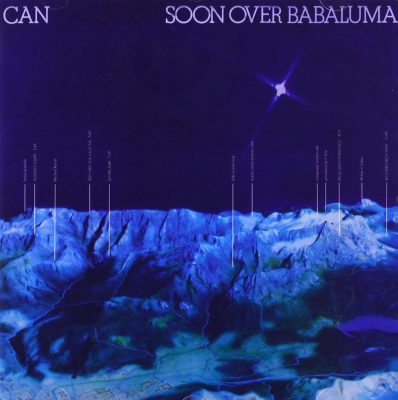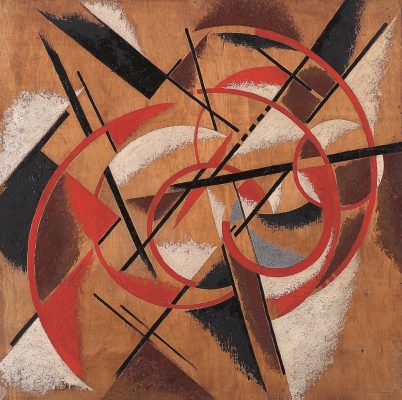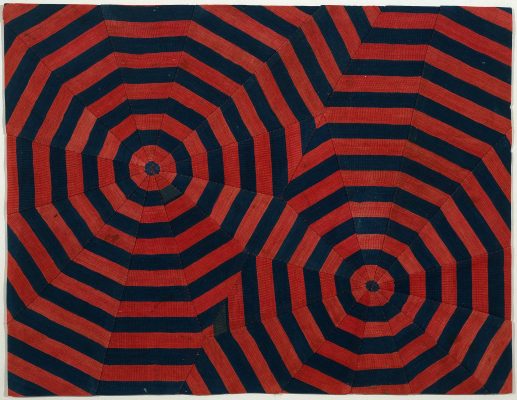Valentine’s Day 2010, Brooklyn: an intern at the Paris Review skips his shift as an undocumented worker at an Upper East Side restaurant to have drinks with a BBC journalist and art critic visiting New York. The White Review is born, or at least the drunken idea of it.
A year later we launched the first print issue at Daunt Books in London’s Cheapside. An unholy coalition between the Conservatives and Liberal Democrats had recently formed a government, promptly tripling tuition fees and sparking protests. The first shots in the Arab Spring had been fired; anti-austerity protests in Greece exposed cracks in the facade of European solidarity that would swiftly widen; Donald Trump was briefly a frontrunner for the Republican candidacy, though his eventual decision not to stand still felt then like the inevitable triumph of sanity over satire. Meanwhile, print journalism and book publishing was dying a slow death – remember the digital revolution? – and we intended to do something, though we didn’t know quite what, about it.
The desire to launch a magazine was born out of our respective frustrations at the state of contemporary publishing in London, and indeed cultural and political commentary in the United Kingdom. Where could an aspiring writer-critic-editor (whatever it was we were back then) hope to get published? The established literary magazines at home seemed to be closed shops, conservative either in their politics or their tastes (there were exceptions, we discovered retrospectively, among them the poetry journals Clinic and Popshot). We lamented the decline of cultural criticism and essay-length journalism, forms which seemed increasingly in danger of confinement to the ivory tower. We were exasperated that the visual arts, so central to London’s culture, were so often made inaccessible to audiences without the theoretical training demanded by gatekeepers determined to protect their own territory. So, inspired by the success of little magazines in New York – The Paris Review, n+1, BOMB, to name a few – we set out to create a new platform for writers, poets, critics and artists who might not otherwise find a place in the publishing landscape.
We didn’t much know what we were doing, in truth. We borrowed a name from La Revue Blanche, a publication edited by the bomb-throwing anarchist art critic Félix Fénéon which took up many of the principles we sought to appropriate for ourselves – to publish ambitious, innovative writing; to bring art and literature together; to publish a new generation of writers; to engage with the world around us. There was even a manifesto, which will never again see the light of day. Buried in the grandiosity was sincerity: we wanted to offer emerging writers an opportunity to test the limits of their talents with the support of conscientious and committed (if inexperienced) editors, and to produce a magazine that had as its first aim to promote their achievements.
We wrote solicitous emails to writers we admired but didn’t know, and to people we knew who wrote. It helped that Tom McCarthy, firmly in the former camp, agreed to an interview in the first print issue (the generosity of writers and artists whom we admire towards this tiny venture has been an essential, and heartening, feature of our seven years). We published a piece about a dead person (Primo Levi), even some poetry by a dead person (Charles Cros, translated by Sophie Lewis). Soon enough we decided no more dead people – we were to be a contemporary magazine – though we have made exceptions for Edouard Levé and Christoph Schlingensief, notably.
That first issue shaped our editorial policy – a commitment to translation, and to emerging writers alongside established – and gave us a structure for the print edition that has endured through the years. Each issue features two or three interviews with established writers and artists, around which we publish two or three pieces of fiction; a similar number of essays; at least two sections dedicated to the work of a single poet; three series of artworks, typically one in black-and-white and two in colour; and a different artist on the cover of each issue. We learned about the slush pile; we learned how to say no; how to commission; how to work with writers; we became editors.
We raised the start-up capital – £7,000 – through friends and family and through the crowdfunding website WeFund (the list of ‘friends’ at the back of each magazine is testament to the number of small donations that allowed us to get off the ground). This allowed us to build a website and produce our first print issue, which sold well enough that we could afford a second. (It has been hand to mouth ever since.) We later applied for, and were awarded, Arts Council funding, which made it possible for us to pay contributors to both the print and online editions of the magazine. We remain eternally grateful to the Arts Council, and to a system of state funding which still (despite drastic cuts) makes it possible for charitable organisations such as The White Review to pursue its enshrined commitment to ‘promoting the arts and literature for the benefit of the public’.
In 2010 we met Ray O’Meara, who became the magazine’s designer and art director. We had meetings. He showed us some typefaces he’d been working on. It turned out that we had similar ideas of what a magazine could be at a time when people were saying the last rites over print publishing. As Anne Carson would state in a later interview with the magazine, ‘Reading and thinking are physical operations. So you can affect both of them by ordering the text as a visual, aural, tactile, choreographic, dynamic event.’ Only in print is this possible. Ray designed a typeface and produced an object which, while beautiful in itself, served to complement and perhaps even elevate the writing it contained (writing, not merely ‘content’). We learned about ‘kerning’, ‘orphans’, ‘widows’ – and how painstaking and time-consuming it is to produce a book. Ray’s bold design also bought the magazine time, as the first three issues sold to a predominantly design-oriented readership while we sought out the literary and artistic audiences who would become the community we had so longed for.
We brought this community together through an extensive programme of events. These performances, film screenings, panel debates, readings and interventions quickly became a central part of our mission as a small institution, and in the seven years since our first we have hosted over a hundred events across the UK, Europe and the United States. The vast majority of these have been free to attend. A tip to aspiring publishers: free drinks go a long way to getting crowds out, whether in a greenhouse in Wapping, a car park in Peckham, a bookshop in Berlin, a gallery in Bristol, or an artist’s studio in Hackney Wick. Yet in all of these instances, only once has a member of the audience purposefully set his girlfriend’s hair on fire. No lasting damage was done.
Alongside the print issue of the magazine we launched an online platform which we hoped would complement and support it. Besides making it possible for us to reach an infinitely wider audience than would have been possible through the distribution of the print magazine, the website has also allowed us to experiment with the new possibilities offered by online publishing, and to consider how the two formats can work effectively together. In that spirit we launched an important collaboration with the independent commissioning body Film and Video Umbrella. ‘White Screen’ commissioned writers including Hannah Black, Juliet Jacques and Mark von Schlegel to respond to artists’ films from the twenty-five year FVU archive. The films and their written complements were published on a dedicated website (https://www.thewhitereview.org/white-screen/). That commitment to finding audiences has led to a number of other offshoots to our central programme of publishing and events over the years. We have run a series of radio shows broadcast by Resonance FM, produced by Bella Marrin, and showcasing our doubtful ability as radio presenters. There was a film series at the Institute for Contemporary Art, London, for which we invited writers and artists including Will Self and Ed Atkins to select and introduce a film of their choice. In 2013, with the support of the Jerwood Foundation, we launched The White Review Short Story Prize, which helped in the first years to supplement our revenue as well as helping to identify some of the most startling talents in British and Irish fiction.
At the time of writing, we have published twenty print issues and sixty-four online issues. This book collects some of the best fiction and essays we have published over the course of that time. Among the emerging talents featured here, Jack Cox, Evan Harris, Jesse Lonzcraine and Patrick Langley made their print debuts in the magazine. Alexander Christie-Miller had written plenty in print, mainly for the Times, but never at such length. His piece ‘Forgotten Sea’ charts the long decline of falconry in Turkey’s Pontos region. Claire-Louise Bennett, winner of the inaugural White Review Short Story Prize in 2013 for ‘The Lady of the House’, has gone on to become of the most exciting writers today. To be able to publish these writers alongside new work by the likes of Anne Carson, Chris Kraus, Deborah Levy and China Miéville, all included here, has been one oft he greatest thrills of publishing The White Review. Another has been the opportunity to juxtapose their writing with the work of artists we admire, represented here by two historic contributors: Camille Henrot, whose drawings adorn the cover, and JH Engstrom, who contributes a series of photographs. Their inclusion is a nod to the series of artworks and visual essays directed by Ray O’Meara since the first issue, a key feature of the magazine.
Political writing, however obliquely one defines it, has never been far from our preoccupations. Lawrence Abu Hamdan’s piece ‘Listening to Yourself’ offers a verbatim transcription of an interview undertaken by a refugee in application for asylum. With ‘Debt’, Natasha Soobramanien and Luke Williams demonstrate that fiction can be political, and collaborative. Evan Lavender-Smith’s Bernhardian fiction ‘A Vicious Cycle’ reads eerily premonitory post-Trump and post-truth. The inclusion of pieces by Álvaro Enrigue (tr. Rahul Bery), Samanta Schweblin (tr. Brendan Lactot) and Gabriela Wiener (tr. Lucy Greaves) are testament to our history of publishing works in translation.
We have consistently sought to situate culture within the wider social and historical circumstances of its production. To this end, Rosanna Mclaughlin untangles the networks of money and influence that define the practice, exhibition and sale of contemporary art, while Lauren Elkin examines the place of women’s writing today, finding its roots in the écriture féminine of Hélène Cixous, Luce Irigaray and Julia Kristeva. Also in the literary critical vein, Jennifer Hodgson and Patricia Waugh expound on the perceived decline of British fiction, while Lars Iyer puts forward a manifesto for literature after the death of literature, presumably written in the nude, in his hot tub, which argues for a new writing ‘at the wake’. We hope you enjoy the party.
CONTENTS LIST
‘Nude in Your Hot Tub’, Lars Iyer (November 2011 – Essay)
‘The Fishermen’, Jack Cox (TWR6 – Fiction)
‘Weeping Machines’, Deborah Levy (TWR4 – Essay)
‘Topsoil’, Jesse Loncraine (TWR7 – Fiction)
‘On a Decline in British Fiction’, Jennifer Hodgson & Patricia Waugh (TWR7 – Essay)
‘Estate’, China Miéville (TWR8 – Fiction)
‘Barking from the Margins: On Ecriture Féminine’, Lauren Elkin (TWR8 – Essay)
‘The Lady of the House’, Claire-Louise Bennett (TWR8 – Fiction)
‘Ordinary Voids’, Patrick Langley & Ed Aves (TWR9 – Essay)
‘To Kill a Dog’, Samanta Schweblin tr. Brendan Lactot (January 2014 – Fiction)
‘Forgotten Sea’, Alexander Christie-Miller (TWR11 – Essay)
‘Resistance’, Chris Kraus (TWR10 – Fiction)
‘A Weekend with my own Death’ Gabriella Wiener, tr. Lucy Greaves (TWR14 – Essay)
‘A Vicious Cycle’, Evan Lavender-Smith, (TWR11 – Fiction)
‘Listening to Yourself’, Lawrence Abu Hamdan (TWR16 – Essay)
‘A Samurai Watches the Sun Rise in Acapulco’, Álvaro Enrigue, tr. Rahul Bery (TWR12 – Fiction)
‘Basic Needs’, Evan Harris (TWR16 – Essay)
‘Debt’, Natasha Soobramanien & Luke Williams (TWR12 – Fiction)
‘The Pious and the Pommery’, Rosanna Mclaughlin (TWR18 – Essay)
‘Uncle Harry’, Anne Carson (TWR15 – Fiction)
The White Review Anthology is available to order here




